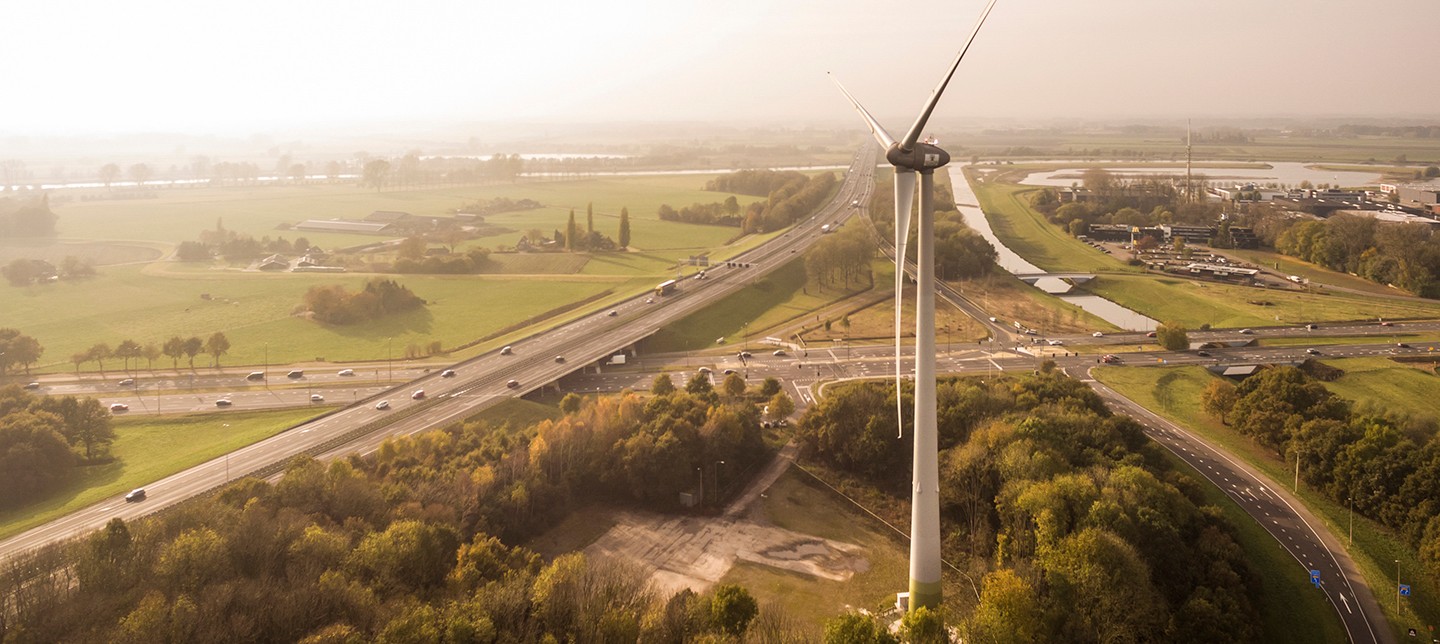
Vision Zero Paves New Road for Auto Industry
Zero emissions, zero accidents, and zero congestion: how Vision Zero is upending the automotive sector and what we can expect in the future.

Recently, world leaders came together at COP26 in Glasgow to address climate change. As a result of the conference, governments and businesses made aggressive commitments to dramatically mitigate the impacts of global warming—from reducing greenhouse gas emissions to reversing deforestation. With climate change being experienced around the globe, technology plays a crucial part in scaling alternative energy sources, reinventing transportation, and designing new city infrastructure to tackle greenhouse gas emissions and counter the effects of climate change. Across all climate innovation, test engineers will be determining new design feasibility and functionality.
As of now, scientists believe reducing emissions in carbon-intensive industries will have the most immediate impact on reducing greenhouse gas emissions. While there is a wave of new, groundbreaking technology showing promise, it will need to be designed, tested, and deployed rapidly to meet aggressive climate ambitions.
Studies show that if warming continues at its current rate, global temperatures are likely to rise 1.5 °C (2.7 °F) between 2030 and 2052—a threshold that would result in dire consequences for Earth and all of its inhabitants.
Governments are responding by enacting policies and providing funding to radically reduce greenhouse gas emissions across all industries and regions. In the United States, a massive infrastructure bill passed late last year that sets aside funding for climate initiatives, including $174 billion for electric vehicles (EVs) and public charging stations, $100 billion to expand broadband access, and $65 billion for clean energy transmission and the energy grid. The funding will help advance the electrification and decarbonization of society, which, ultimately, will drastically reduce greenhouse gas emissions and remove fossil fuel energy sources from the world’s energy market to meet 2050 net zero targets.
Public charging stations are becoming more pervasive as demand for EVs grows.
As EV usage becomes more widespread, one major challenge is duplicating what we currently experience with gas-powered vehicles. Currently, engineers are working on solutions to extend battery life, range, energy density, and charging speed to drive EV adoption and reduce dependency on gas-powered vehicles. Improving charging infrastructure and access to charging stations will supplement the transition, as well. NI is working closely with many of our automotive customers as they renew their focus on the Vision Zero strategy: Zero accidents, zero emissions, and zero congestion. In the long term, we can drive down emissions as society changes its mindset towards transportation, especially as levels of autonomy increase and Mobility as a Service (Maas), or transportation access without vehicle ownership, becomes more prevalent.
Another growing trend to address climate change is the demand for more sustainable cities. Today, cities are key contributors to climate change, consuming more than two-thirds of the world’s total energy. By leveraging smart technology such as smart street lighting and energy metering, cities can make significant reductions in energy usage. Cities also are taking advantage of wind and solar power technology—which gets more efficient and competitive each year.
Cities across the country are shifting toward renewable energy, such as solar, to mitigate climate change.
In addition to electrification and renewable energy solutions, groundbreaking energy technology investments that address climate change have increased considerably. Within recent years, venture capital funding for climate and energy start-ups has grown exponentially, with $32 billion raised in 2021 globally—nearly 5X more than in 2016, when the Paris Climate Agreement was signed. Two of the world’s most powerful investment firms—BlackRock ,Inc., and Temasek Holdings Pte. Ltd.—recently created Decarbonization Partners to invest in start-ups focused on addressing climate change. Tech titan John Doerr said that he believes that green technology is “bigger than the Internet…It could be the biggest economic opportunity of the 21st century.” Bill Gates said that we either need a “big storage miracle, or we need some form of nuclear to make sure that it’s green and reliable,” and he has invested heavily in both battery optimization and nuclear energy.
Fusion energy—the opposite reaction to nuclear fission that releases huge amounts of energy without carbon emissions and with limited radioactivity—continues to see growth. Some experts predict that fusion may be on the grid as early as the 2030s, and there are now at least 35 fusion companies in several countries that have raised a combined $1.9 billion, primarily from private sources.
Geothermal energy (the heat stored in Earth’s crust) is another explorable renewable energy source. Experts at MIT estimated that there are 200,000 exajoules of extractable geothermal energy just below the United States—a number so large that just releasing two percent could supply 2,000 times the energy demands for the entire country. But we’ve only utilized a fraction of its potential due to regulatory and technological barriers. Expanding the use of, and increasing investments in, geothermal energy technology in the United States can significantly contribute to decarbonization goals, as seen in other countries. For example, Paris, France’s geothermal district heating system offsets emissions from 170,000 buildings and saves 120,000 of CO2 annually.
Geothermal power plants house potential for a clean-energy future.
While fusion and geothermal technology breakthroughs will not happen quickly enough and at a large enough scale to immediately combat climate change, the research and development being done in those spaces are critical to impacting the ongoing climate crisis.
Today’s climate crisis requires swift, efficient action. NI already is seeing incredible advancements across our automotive customer base as it manufactures EVs at a rapid rate, and we anticipate exciting breakthroughs in many new areas in the future. Fortunately, recent test advancements can help many of these new research areas come to market faster than ever. While engineers will help pave the way to make worldwide climate goals a reality, test engineers will be responsible for ensuring the solutions are developed as quickly and efficiently as possible.